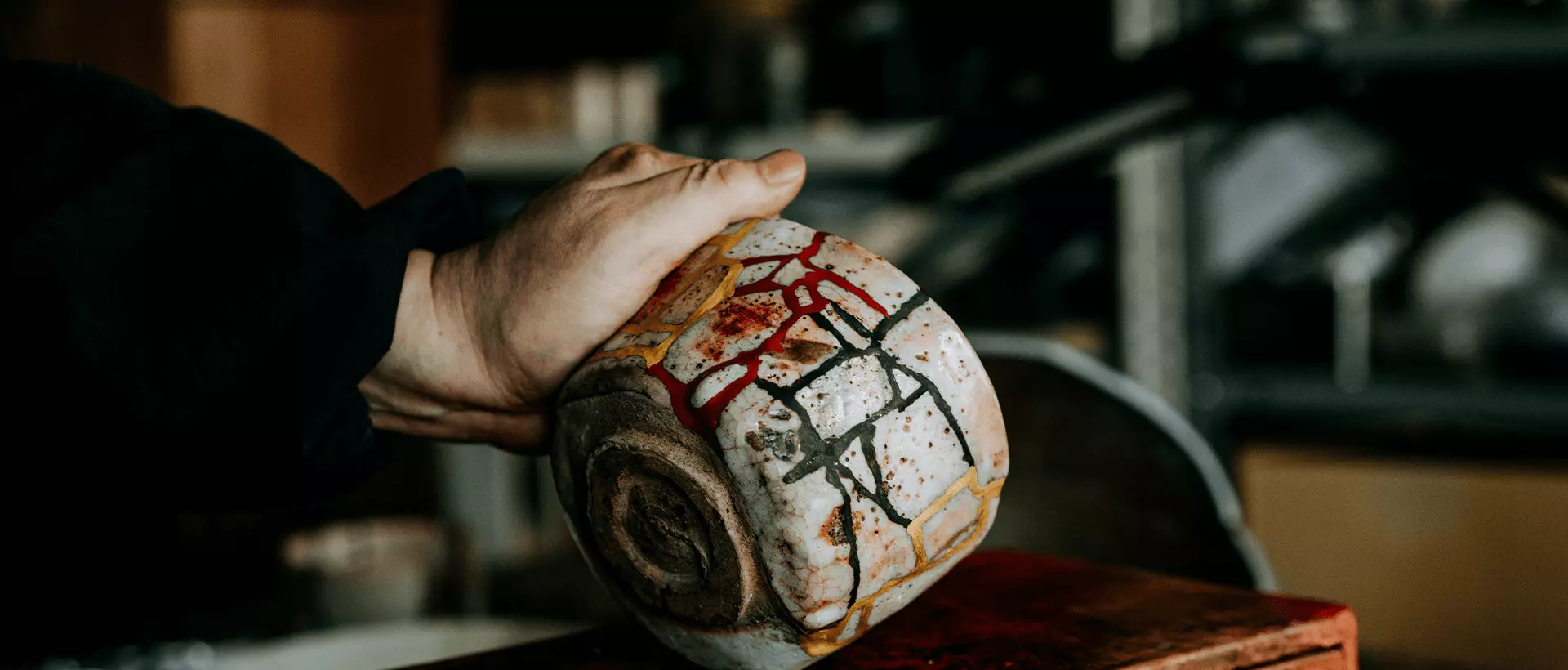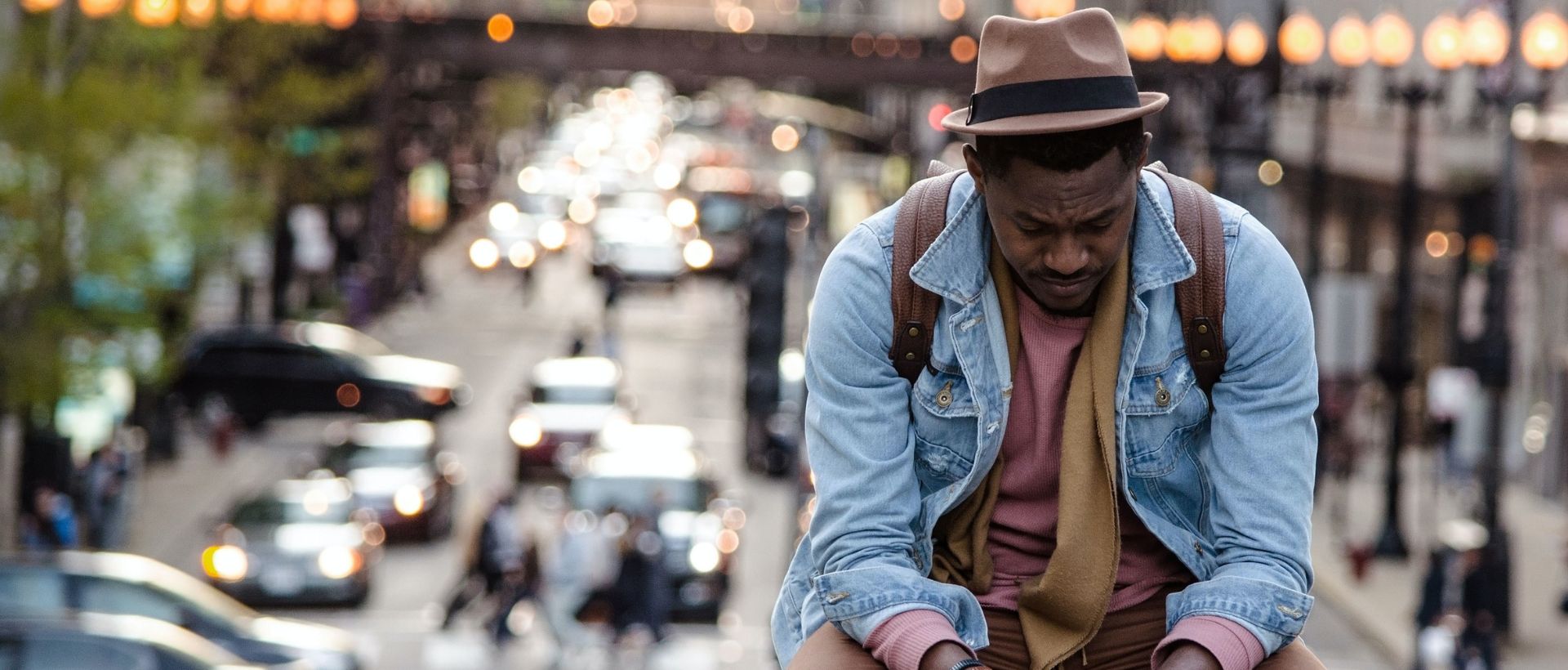In the central plaza of Japan Center stands one of the most striking and unusual structures in San Francisco: the Peace Pagoda. It is both ironic and appropriate that a shrine to peace stands here, for the site was the epicenter of one of the most heated battles over land use in the City’s history.
The Japanese Cultural and Trade Center, to give it its full name, was constructed between 1965 and 1968, on the site of what was once a thriving Japantown, or Nihonmachi. In the late 1950s and early 1960s, the heart of that neighborhood was ripped out by the massive and now-infamous redevelopment project carried out by the San Francisco Redevelopment Agency under the leadership of Justin Herman, which razed most of the Western Addition. By 1960, at least 1,500 Japanese American residents and more than 60 small businesses had been displaced. Many of the Japanese Americans living in Nihonmachi thus found themselves displaced twice: first when they were rounded up after Pearl Harbor and shipped off to wartime relocation camps, and then, after they returned to their old neighborhood, by redevelopment. Thousands of African Americans, most of whom had come to San Francisco to work in the wartime shipyards and many of whom had moved into the former homes of the departed Japanese, were also displaced by this misguided attempt at “urban renewal,” which James Baldwin famously called “Negro removal.”
The Japanese Cultural and Trade Center, which soon became known simply as Japan Center, was the first major project undertaken by Herman and the centerpiece of the Redevelopment Agency’s plans for the gutted area. It was intended to draw corporate investments from Japan, showcase Japanese cars and other consumer items, and become a revenue-generating tourist destination like Chinatown. The complex was funded and designed by a consortium of Japanese and American firms: The master developer, National- Braemar, was headed by a Japanese businessman from Hawaii named Masayuki Tokioka; its primary designer was nisei (which refers to a second-generation Japanese American) architect Minoru Yamasaki; and local architecture firm Van Bourg/Nakamura drafted the plans.
National-Braemar President Tokioka came up with the idea of the Peace Pagoda. His motivation was a wave of anti-U.S. protests in Japan that climaxed in the so-called Hagerty incident. In June 1960, riots broke out in Japan, spurred by outrage over a pending treaty that allowed U.S. military forces to remain in the country. On June 10, thousands of protesters in Tokyo surrounded a car carrying President Eisenhower’s press secretary, James Hagerty, smashing its taillights, slashing its tires and rocking it back and forth for more than an hour. Hagerty and others in the car had to be rescued by a Marine helicopter, and Eisenhower canceled a planned trip to Japan. Tokioka said he was inspired to erect the Peace Pagoda to demonstrate that “the majority — a big majority — of the Japanese people are friends of the Americans.”
Peace pagodas are a recent phenomenon, only dating to after World War II. Most of them (although not the one in San Francisco) were built under the direction of Nichidatsu Fujii, a Buddhist monk from Japan who founded the Buddhist order Nipponzan-Myōhōji, whose followers are famous for chanting “Namu Myōhō Renge Kyō.” (The phrase has been alternately translated as “I devote myself to the Mystic Law of the Lotus Sutra” and “I devote myself to the Wonderful Dharma of the Lotus Flower Teaching.”) Fujii dedicated his life to promoting nonviolence after meeting with Mahatma Gandhi in 1933. The first peace pagoda was completed in the Japanese city of Kumamoto in 1954, and others were also built in Hiroshima and Nagasaki, the two cities devastated by U.S. atomic bombs in 1945. About 80 peace pagodas have been built around the world, including four in the United States. All of them are stupas, Buddhist structures that serve as places of meditation, which date to fifth-century India, when they were used to commemorate and store sacred relics associated with the Buddha.
One of postwar Japan’s most famous and influential architects, Yoshiro Taniguchi of Osaka University, was chosen to design the Japan Center plaza and the Peace Pagoda. The 100-foot-high, five-tiered concrete structure, a gift from Osaka to its sister city of San Francisco, was dedicated in 1968. It was originally surrounded by two reflecting pools, but drainage problems led to their removal.
Imposing and serene, the Peace Pagoda looms over a site whose complex history is an inextricable mixture of the good and the bad. It is at once a marker of loss and a beacon of hope.












